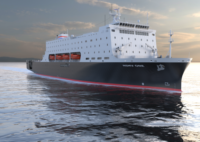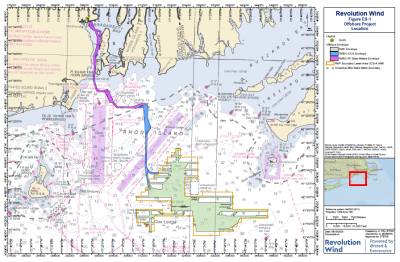The aged steamship Empire State VI will be the first U.S. maritime training ship to be replaced by a new “national security multi-mission vessel,” with $300 million for the first ship included in the 2018 federal budget signed by President Trump Friday.
“Hope to see new ship at Olivet Pier in 2022! Let’s get started cutting some steel!” wrote Rear Adm. Michael Alfultis, president of the State University of New York Maritime College, in an exuberant Twitter post after the bill signing.
The steamship Empire State VI is the oldest of the Marad training fleet, along with the Massachusetts Maritime Academy’s Kennedy. The next generation of training ships would be designed to teach cadets on modern technology and meet all international safety and environmental standards.

The Empire State VI, built in 1962, has been the SUNY Maritime training ship since 1989.
SUNY Maritime officials credited their local congressman, Rep. Joe Crowley, D-N.Y., who heads the House Democratic caucus, and New York Democratic Sens. Chuck Schumer and Kristen Gillibrand, Secretary of Transportation Elaine Chao and SUNY Chancellor Kristina Johnson for supporting the appropriation. SUNY Maritime faculty, staff, alumni and supporters joined in several letter writing campaigns in support of building a new ship.
College officials say the anticipated building plan would deliver the first NSMV to the Bronx, N.Y., campus in time for the 2022 summer sea term.
In the meantime, Crowley said he will work in Congress to ensure that the Empire State VI – built in 1962, and the SUNY training ship since 1989 – gets adequate funding and maintenance. In 2014 Crowley and a bipartisan group in Congress began pushing to provide Marad with funding for new training ships, and Crowley said that effort will continue to replace the Kennedy and other ships with the NSMVs.
The design includes:
- Berthing for more than 700 individuals, expandable to house 1,000 people for up to two weeks in times of humanitarian need.
- Roll-on/roll-off and container storage, with a cargo crane and side ramp for self-loading vehicles.
- Hospital facilities.
- A helicopter landing pad.
- Training spaces, including eight classrooms, a full training bridge located immediately below the working navigation bridge, workshops, lab spaces and an auditorium.
- Thrusters and a flap rudder to allow the ship to moor without tugs at austere ports.






